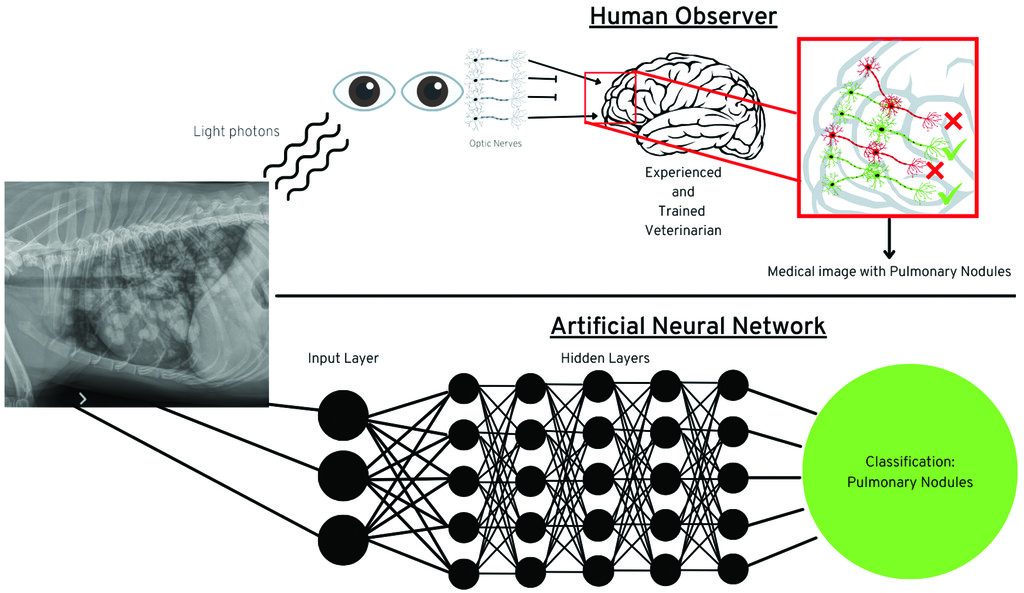Artificial intelligence (AI) is an important technological advancement changing the shape of our lives. Employed by many of the largest companies in the world, AI technologies power our favorite mobile applications; offer movie, TV, and music suggestions; and predict the next word in our text messages. The opportunities to leverage the power of AI to improve our quality of life in our day-to-day or professional activities seem endless, notwithstanding ethical challenges. Nowhere is this opportunity more apparent than in medical practice. Over the last 2 decades, publications on AI in medicine have increased exponentially.1 In particular, there have been profound advances in AI and the field of diagnostic imaging where technologies have been developed to aid in diagnosis and support radiologists in both research and commercial settings. A similar shift is occurring in veterinary medicine: we are on the cusp of a large and unpredictable shift in available technology that has the potential to reshape how veterinary medicine is practiced.
Practically speaking, it is not necessary for the average veterinary practitioner to have a working knowledge of computer programming to effectively use and implement AI. However, the implementation of adopting a technology can be considered analogous to implementing a new diagnostic test in practice. For example, the average veterinarian cannot design and develop an ELISA for benchtop testing. However, veterinarians do have enough underlying knowledge of what an antigen or antibody is, as well as how ELISA testing works to feel confident employing so-called SNAP tests in practice. Furthermore, veterinarians are aware of the need to have a quality management system in place to ensure the tests work as expected. Similarly, while details of the computer algorithm designed for diagnosis or detection of diseases will initially be foreign to most veterinarians, a baseline level of knowledge is needed to understand the power and pitfalls of AI.
Artificial intelligence is still in its nascent stages but will likely have a profound impact on our profession in the years to come. Therefore, it is vital that all veterinarians understand both the promise and limitations of AI. The purpose of this manuscript is to provide the definitions and concepts behind AI, describe its power and pitfalls, and provide some guidance to veterinarians implementing AI in their practice.
……..
SOURCE : JAVMA 2022







